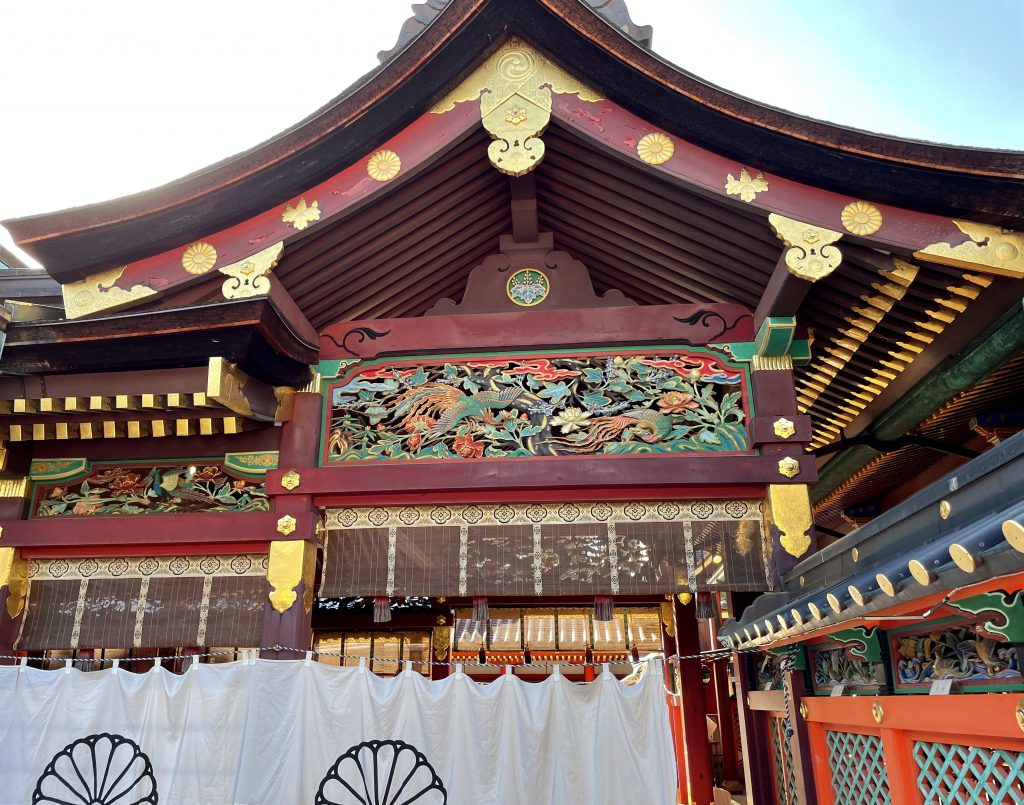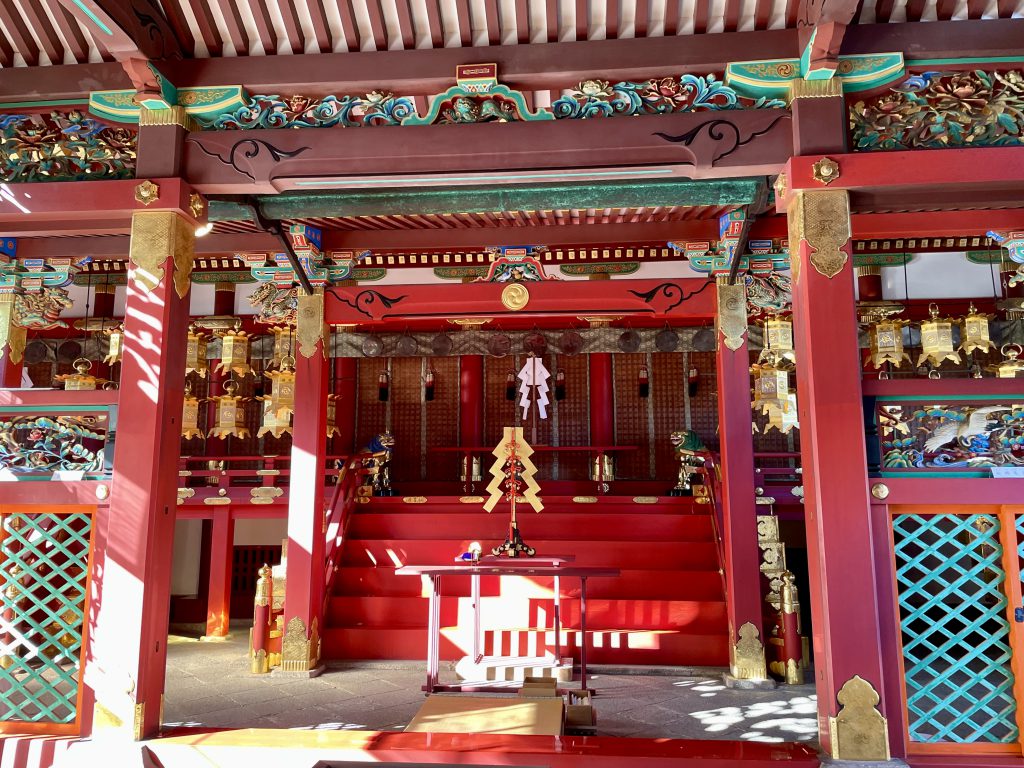Entering the main shrine sanctuary, immerse yourself in the world of vermilion and beauty of its sculptures.
Written by National Government Licensed Guide Interpreter Ikuko Kubota
Let’s ride the cable car to Iwashimizu-Hachimangu Shrine, sitting atop Mt Otokoyama in Yawata city in the south of Kyoto.
Mt Otokoyama overlooks the city where three major rivers meet and merged into one river called the Yodo river, flowing down to Osaka. In the old days when goods were transported by boats through the waterways this area was a key transportation point between Kyoto and Osaka.
From the cable car you can enjoy panoramic view of the city. I’m sure you’ll feel refreshed. After a few minutes of air travel you will reach the rich forest near the mountain top. Walking along the forest path listening to the singing of wild birds, you’ll reach the shrine complex before long.
Here we are on the approach to the shrine. Take a look at a great number of stone lanterns lined up on the path. They have been donated by many people over a long period of time. Make your way to the main hall walking along this lantern lined pathway.
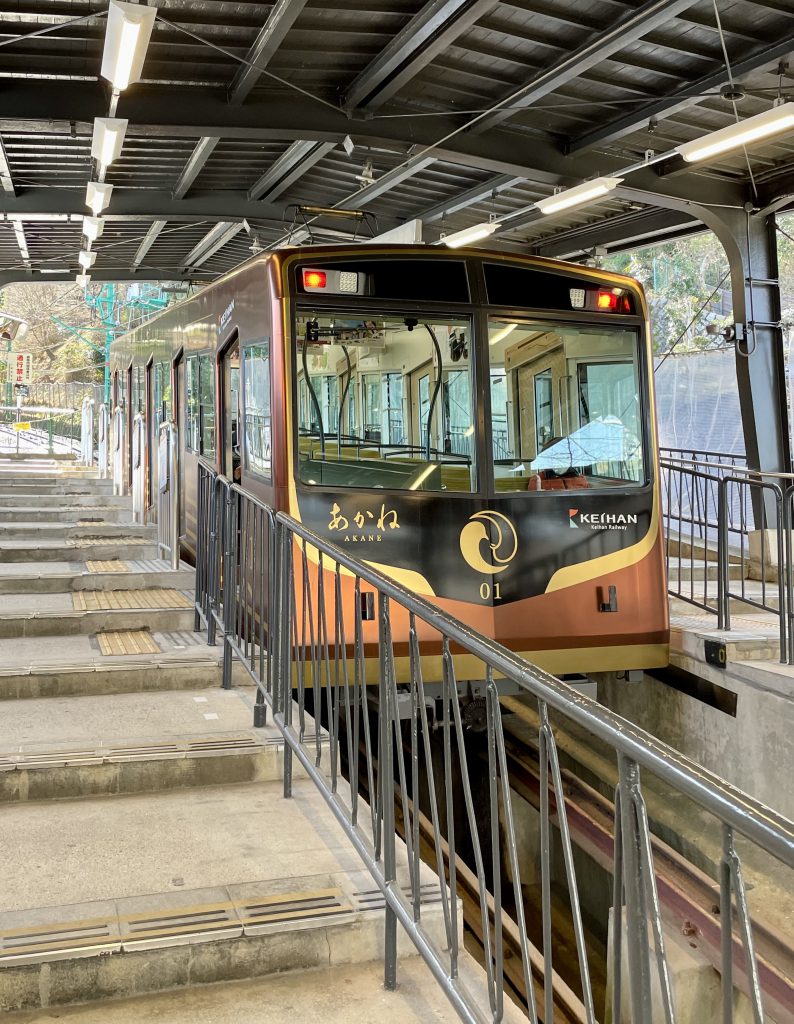

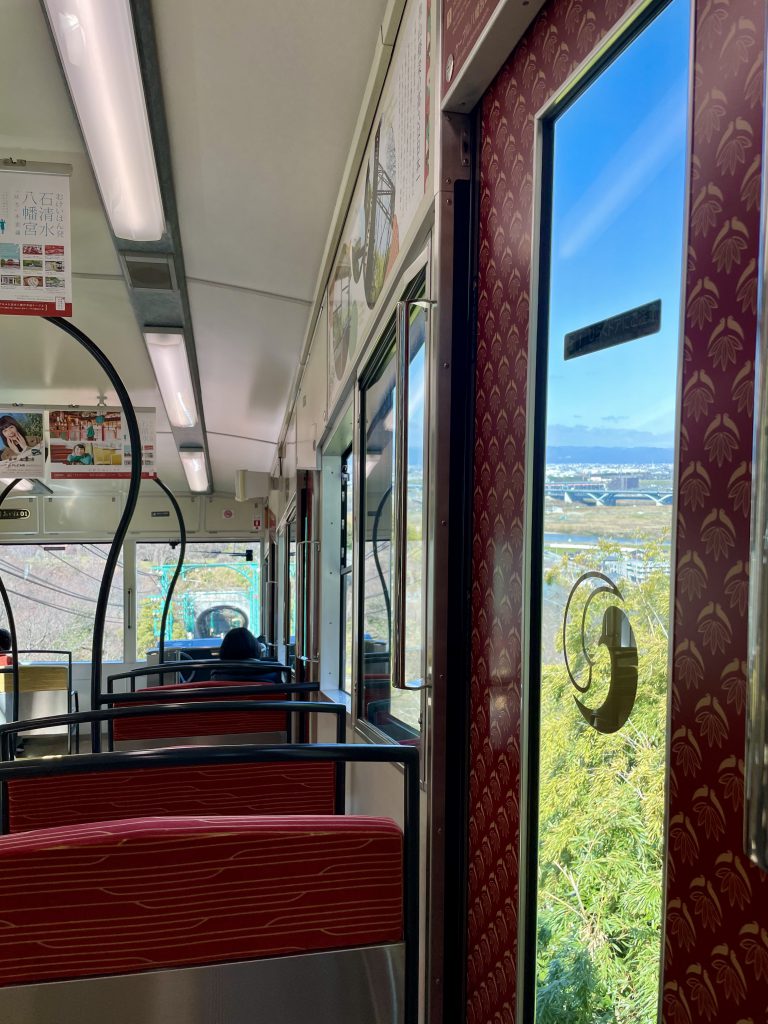
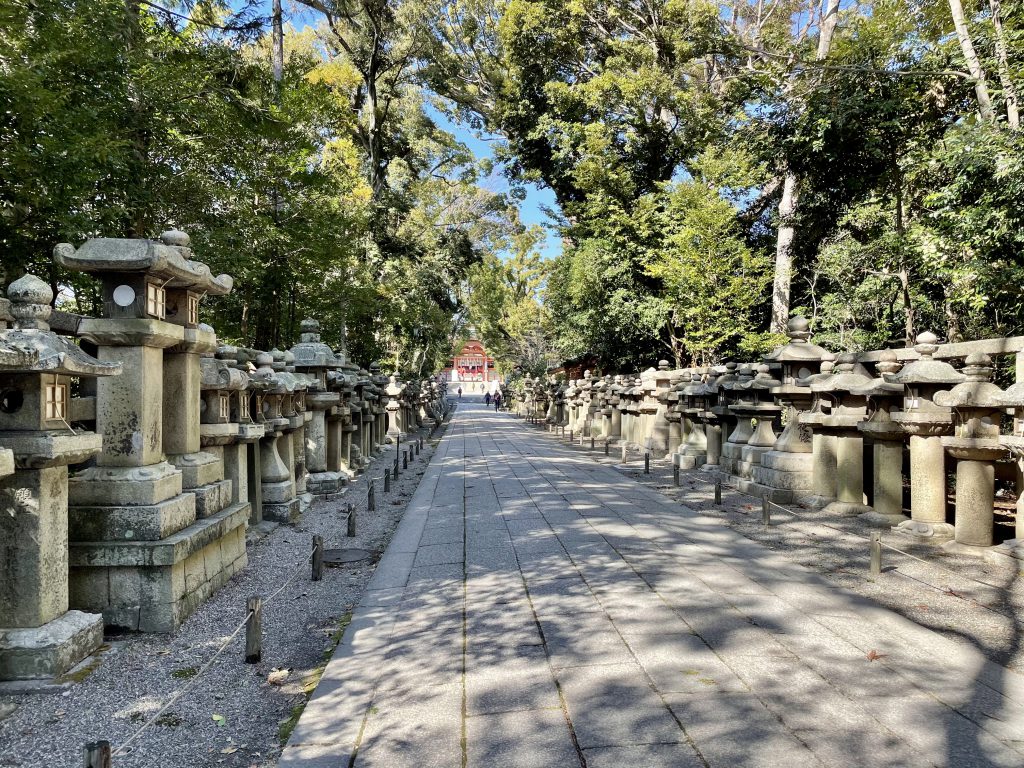
Now the vermilion colored main hall awaits you. It’s a large splendid building complex, designated as national treasure. The shrine has a history of over thousand years.
This shrine is dedicated to Hachiman-ohkami or great deity, revered as the guardian deity of the nation. Mt Otokoyama is located in the southwest of Kyoto considered as a very unfavourable direction of the city. The shrine has been worshiped as the guardian shrine of the ancient capital Kyoto.
Let’s enter the main hall complex. It’s a world of vermilion color. The roofed corridors surrounding the main hall are picturesque and create a sacred atmosphere.
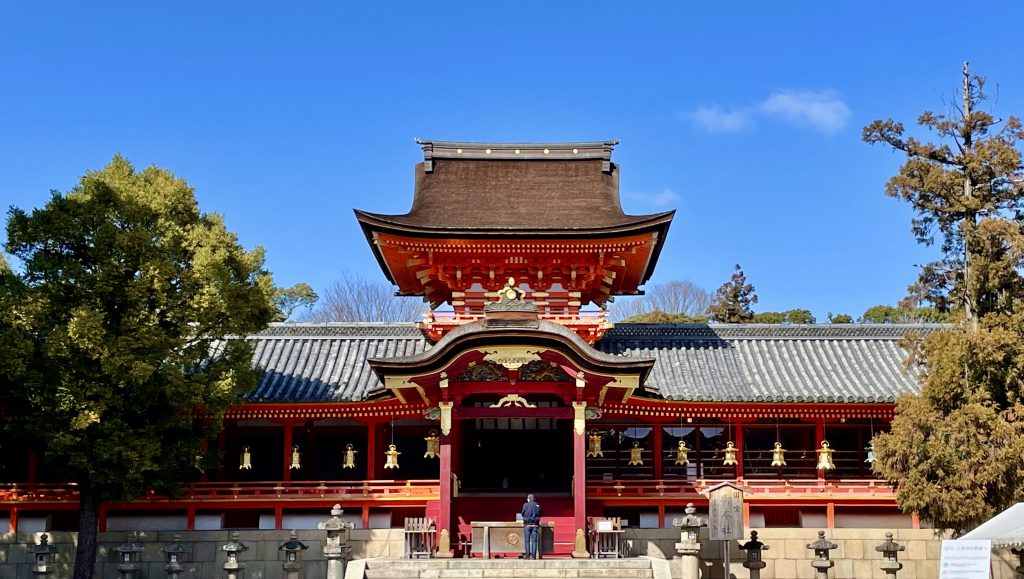
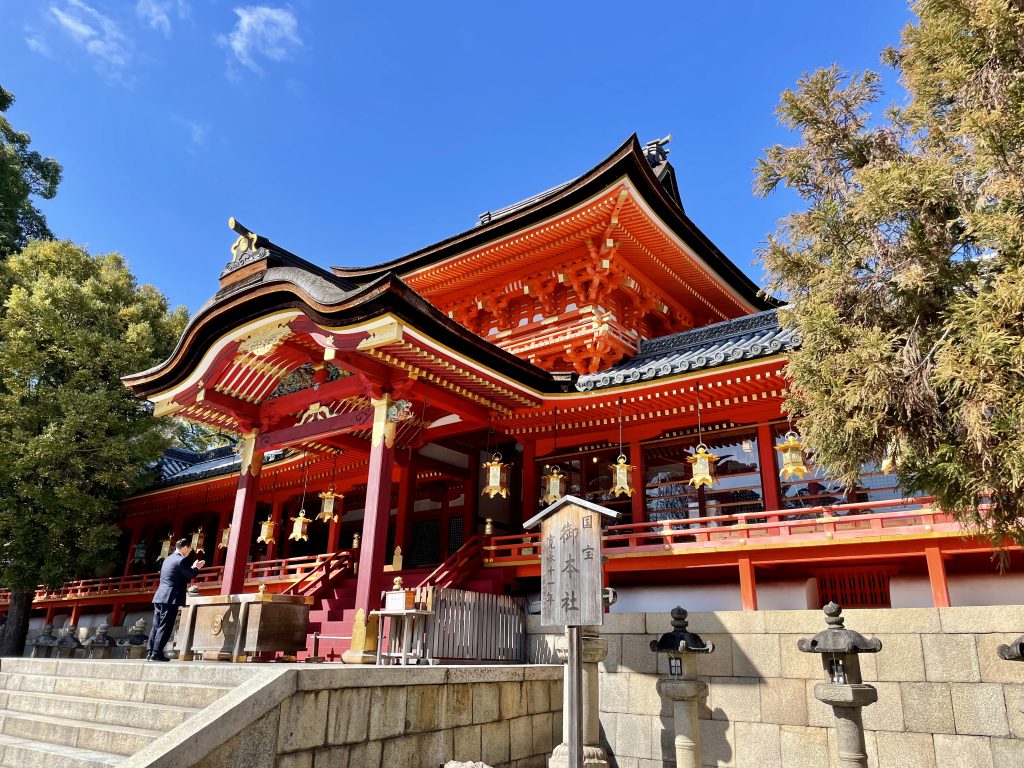
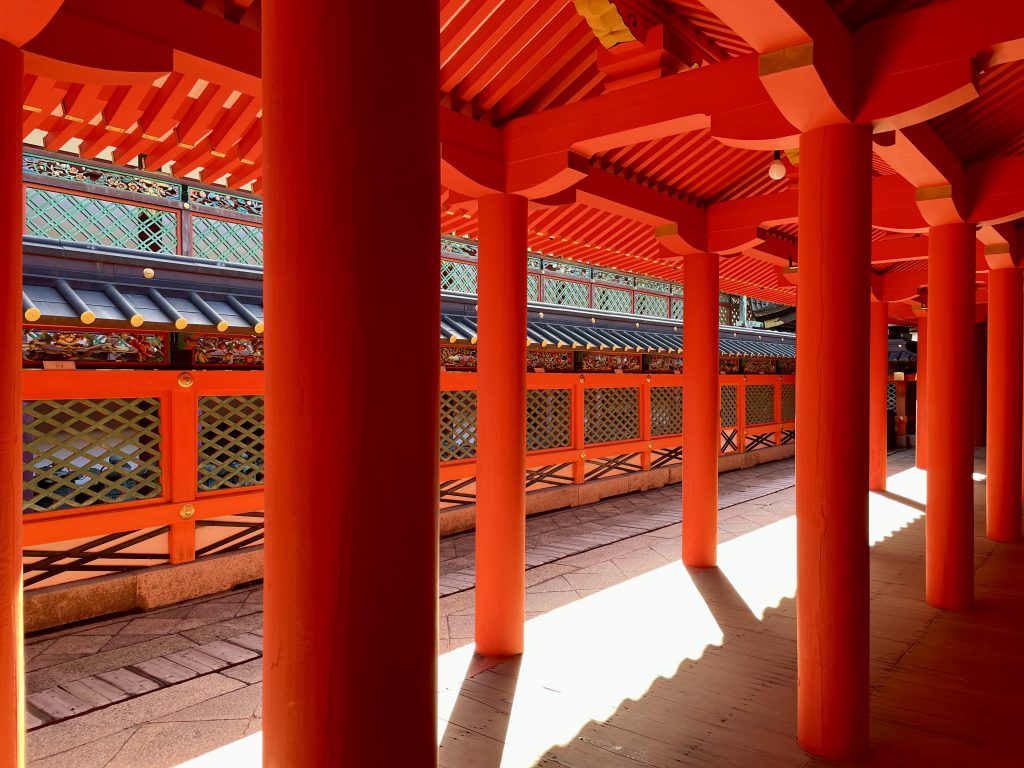
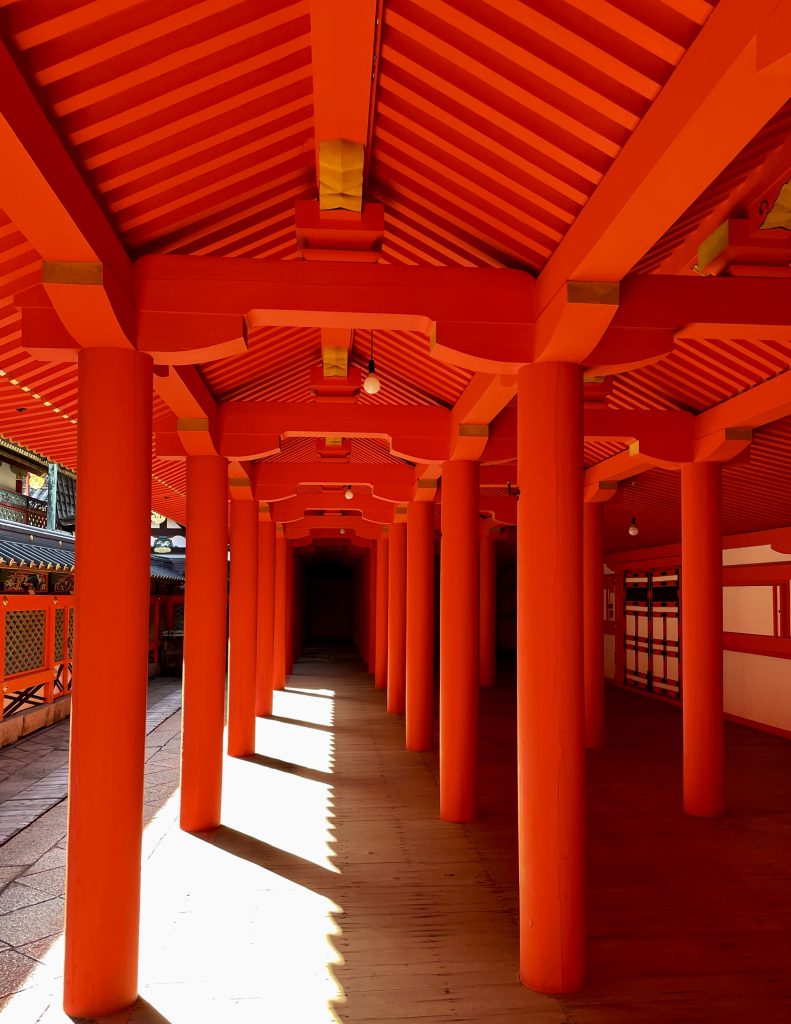
This is the famous “Golden gutter” coated with gold leaf and shining gold. The 21 m long gutter was donated by the powerful warlord Oda Nobunaga in the late 16th century. As per the legend the purpose of the donation was to convert the gold in to funds require to repair the shrine if a disaster occurs.
Take a look at this sculpture with a pair of doves. They are the divine messengers of great Hachiman deity. Another vivid and cute sculpture depicts “squirrels and grapes.” It seems unusual for a shrine sculpture..
There are so many colorful sculptures of plants and animals that you might feel as if you are wandering around an imaginary zoo or botanical garden wonderland.
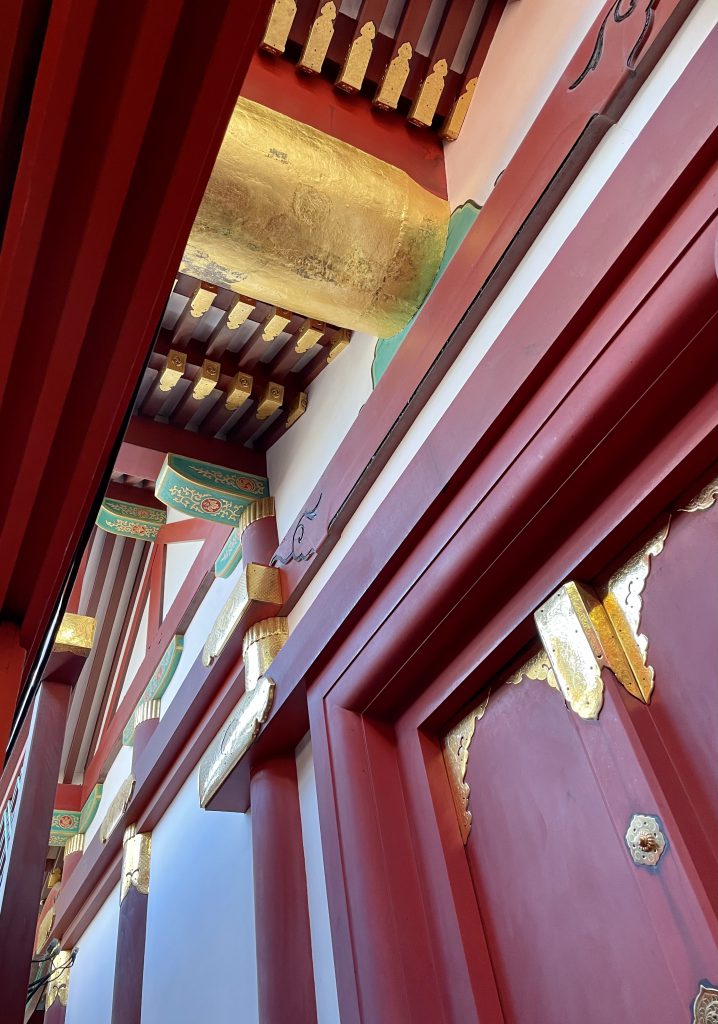
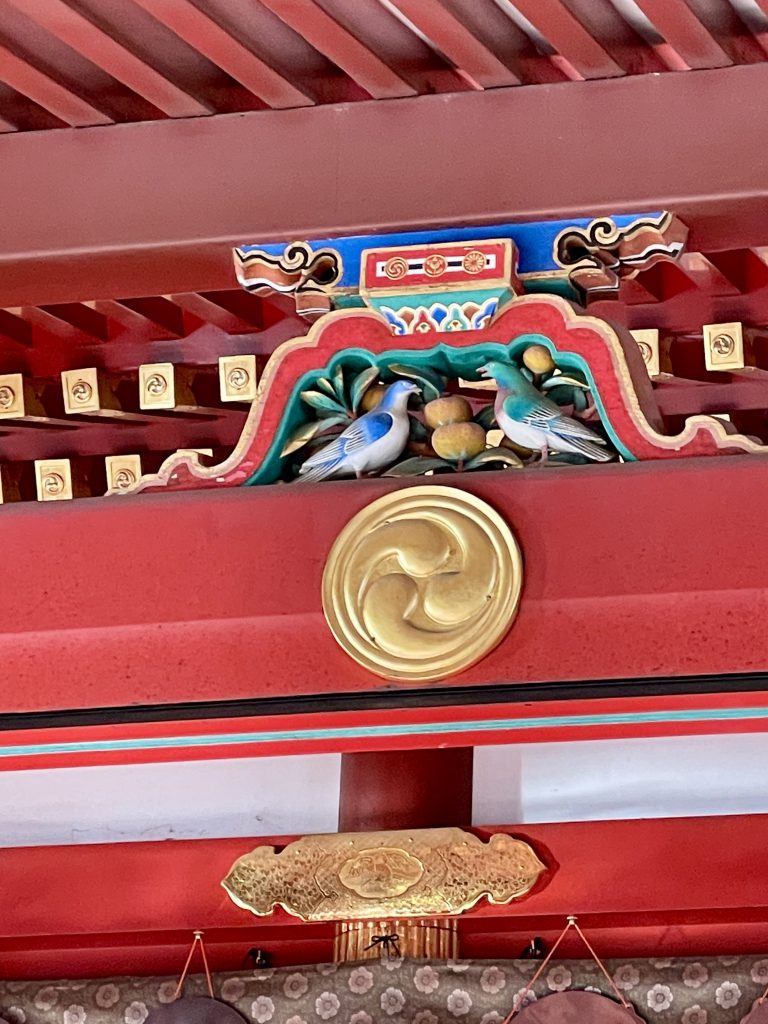
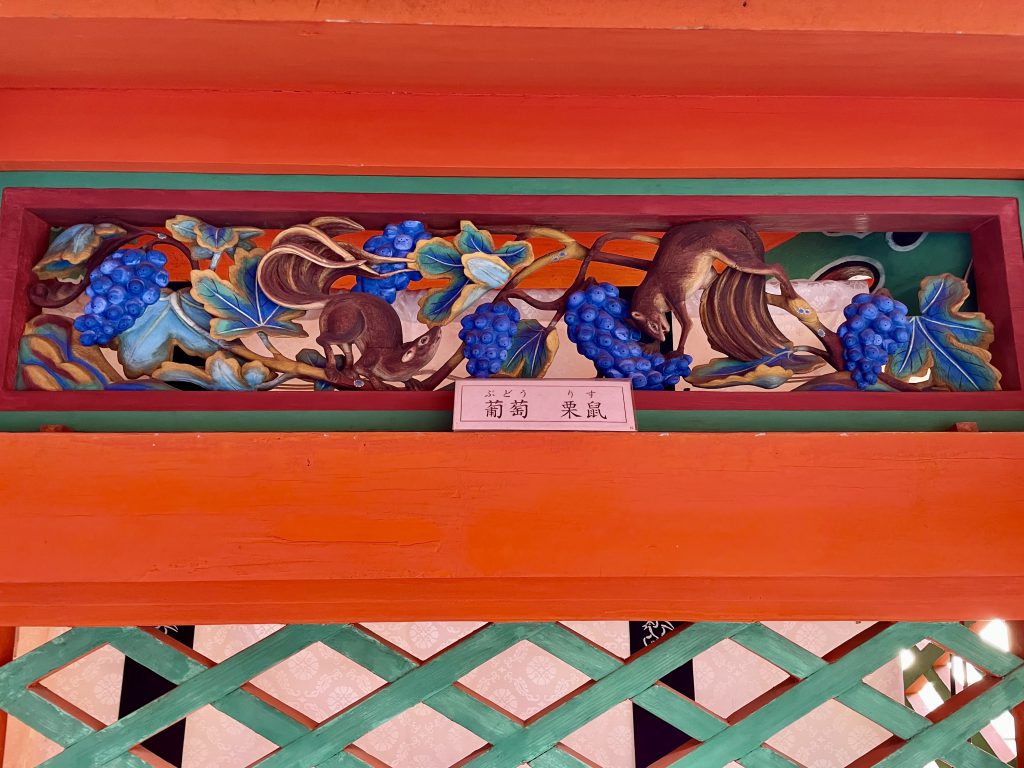
Finally, from here we’ll enter in to the sanctuary or the main shrine. The altar inside the sanctuary overwhelms the visitors by its vibrant colors, design and beauty. We are instantly enveloped in the solemn and sacred atmosphere.
The interiors are filled with brilliant decorations and artworks simply spectacular. It is said to be the work of famous wood carver Hidari Jingōro and his group of sculptors. .
Each sculpture is carved from one single piece of wood with no joints or additional pieces added substantiate their superb skills.
To be precise three deities are enshrined here and they are Emperor Ohjin, his mother Empress Jingu and Hime Goddesses. They are collectively known as Hachiman-ohkami or great deity.
Hachiman great deity has also been worshiped as the deity of warriors by many famous warlords who conducted regular repairs to the shrine buildings.
